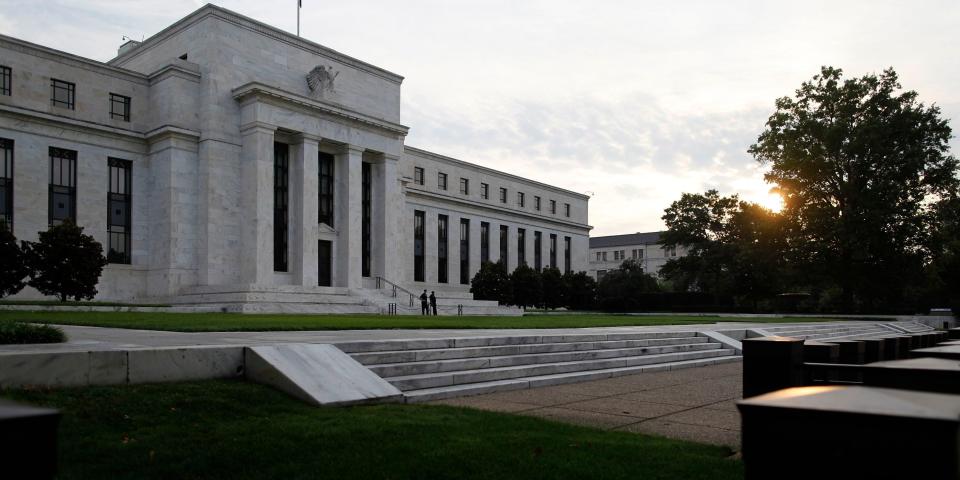
-
The Fed’s battle with inflation could have economic consequences far beyond US borders, according to a new report from the World Bank.
-
The rapid tightening of monetary policy will have a particular impact on emerging and developing economies.
-
Markets believe the Fed is likely to suspend interest rate hikes at its policy meeting next week.
The Federal Reserve’s attempts to stifle inflation by raising interest rates have yet to cause a recession in the United States, but a World Bank report released on Tuesday shows that the actions of the US central bank could have economic consequences well beyond its borders.
The Fed is likely to suspend interest rate hikes at its meeting next week, with federal funds futures from Friday afternoon showing a 72% chance that policymakers will hold steady.
The central bank has raised interest rates 10 times in just over a year, although inflation still remains above the 2% target. In May, the Fed’s Federal Open Market Committee raised its benchmark rate by 0.25 percentage points, pushing the federal funds rate to a target range of 5% to 5.25%. The latest cycle marks the fastest rate of tightening since the early 1980s.
According to the World Bank in its latest Global Economic Prospects report, the rapid tightening of monetary policy in the United States will have a particular impact on emerging markets and developing economies, or EMDEs, and could lead to financial crises and recessions around the world.
A hawkish tightening by the Fed can spill over into EMDEs, which could lead to higher domestic interest rates and currency depreciation exacerbating inflation. This could make it much more difficult for companies and governments in these countries to borrow money and access capital.
The findings come amid World Bank projections that the global economy is in a “precarious state” as rising interest rates slow consumer spending and business investment. This suggests a more unstable financial system in the face of a slowdown in the estimated global growth rate of 2.1% from 3.1% last year.
“With rising U.S. interest rates driven primarily by inflation and reaction shocks, the outlook for EMDEs is worrisome,” the authors wrote.
Reaction shocks, defined as changes in interest rates following shifts in market perceptions of the Fed’s views on inflation control, could have particularly costly effects on EMDEs. Reaction and inflation shocks can drive down stock prices and depreciate currencies. Currency depreciation could lead to higher food and other import costs.
EMDEs with greater financial vulnerabilities and macroeconomic imbalances – such as those with lower credit ratings and account deficits – may be particularly vulnerable to economic and financial conflicts caused by interest rate hikes in states. -United.
Fed policy is likely to remain tight as it attempts to bring inflation down, and this spillover could come amid unprecedented debt levels in many EMDEs. According to the report, almost 60% of low-income countries are either in debt distress or at high risk.
In addition to Fed action, turmoil in the US financial system following several bank failures this spring could also threaten EMDEs. With US banking strains slowing the expected path of interest rates, EMDEs could face reduced exports and disrupted financial markets amid slowing growth prospects. Since late 2021, many other EMDEs have faced loss of market access and a higher probability of default.
The report suggests that central banks in advanced economies can communicate “their intentions as clearly as possible and calibrate their strategies to avoid abrupt shifts in the policy outlook.” In addition, EDME monetary authorities may need to tighten their own policies to avoid a drastic increase in inflation or currency depreciation, thereby reducing fundamental economic vulnerabilities.
Policy efforts, the report says, should focus on ensuring that international financial institutions receive adequate funding to support EMDEs in distress. This implies more adequate bank capital, better currency management and stronger liquidity, which go hand in hand with a restructuring of the external debt of certain EMDEs.
Read the original article on Business Insider
